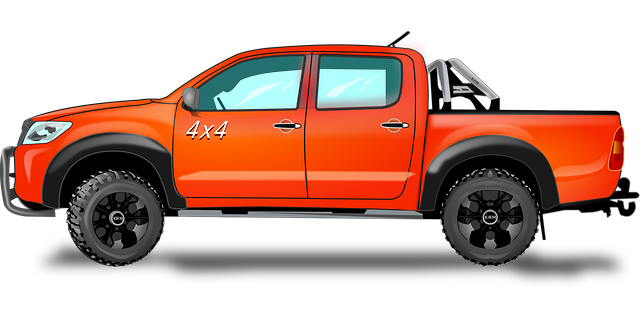ABS (Anti-lock Braking System) sensors are crucial for the safety of McAllen 4WD clubs and rugged terrain vehicles, preventing wheel locking during heavy braking. These sensors optimize power distribution between wheels, enhancing grip on challenging trails and adverse weather conditions. Regular maintenance, including inspections and cleaning, is essential to prevent ABS sensor issues like erratic brake lights or pulsing brakes. Future advancements in ABS technology promise enhanced safety and performance for McAllen 4WD clubs enthusiasts exploring rugged landscapes.
“ABS sensors, or Anti-lock Braking System sensors, are critical components in modern vehicle safety, especially in 4WD vehicles. This article delves into the fundamental understanding of ABS sensors and their pivotal role in enhancing off-road capabilities, particularly within the context of McCallen 4WD clubs. We explore how these sensors work with 4WD systems, common issues, and troubleshooting tips. Additionally, we discuss maintenance guidelines and advanced features that shape the future of ABS technology in off-road vehicles.”
- Understanding ABS Sensors: A Basic Overview
- The Role of ABS in 4WD Vehicles
- How ABS Sensors Work with McCallen 4WD Clubs
- Common ABS Sensor Issues and Troubleshooting
- Maintaining ABS Systems for Optimal Performance
- Advanced Features and Future of ABS Technology in Off-Road Vehicles
Understanding ABS Sensors: A Basic Overview

ABS sensors, or Anti-lock Braking System sensors, play a crucial role in modern vehicles’ safety systems, especially for those with 4WD capabilities like the popular McAllen 4WD clubs. These sensors are an integral part of the ABS system designed to prevent wheels from locking up during heavy braking, ensuring better control and reducing the risk of skidding. By continuously monitoring wheel speed, these sensors detect when a wheel is about to lock and trigger a series of actions to maintain steering control.
In the case of 4WD vehicles, ABS sensors are even more critical as they help manage power distribution between the front and rear wheels, especially during challenging terrain or adverse weather conditions. When navigating rough trails or driving in rain or snow, these sensors enable drivers to maintain better grip and control, enhancing overall safety and performance, be it on a thrilling off-road adventure or a daily commute.
The Role of ABS in 4WD Vehicles

In the realm of four-wheel drive (4WD) vehicles, Anti-lock Braking Systems (ABS) play a pivotal role in enhancing safety and control. ABS sensors are crucial components that enable these systems to function effectively. For McAllen 4WD clubs and enthusiasts, understanding the role of ABS is essential for navigating challenging terrain. By preventing wheel lockup during hard braking, ABS allows drivers to maintain steering control and maneuver safely over loose surfaces or uneven terrain.
This technology is particularly valuable in 4WD vehicles, which often face demanding off-road conditions. The sensors continuously monitor wheel speed, detecting any signs of lockup. When lockup is imminent, the ABS system actively pulsates the brakes, preventing wheels from locking while allowing drivers to steer with precision. This feature fosters a dynamic driving experience and ensures folks in McAllen 4WD clubs can confidently tackle diverse trails.
How ABS Sensors Work with McCallen 4WD Clubs

ABS (Anti-lock Braking System) sensors play a critical role in enhancing safety for off-road enthusiasts using McCallen 4WD Clubs. These sensors are strategically placed near each wheel to continuously monitor wheel speed during braking. When one wheel approaches the lockup point, cutting off vital traction, the ABS sensor signals the system to reduce brake pressure on that wheel. This allows the wheel to rotate again, preventing skidding and maintaining control, even in challenging terrain.
For McCallen 4WD Club members exploring rugged landscapes, this technology is invaluable. It ensures drivers can navigate steep inclines, muddy trails, or icy roads with confidence, knowing their vehicle’s braking system is optimized for safety and performance. The seamless integration of ABS sensors with 4WD clubs enhances the overall driving experience, making it safer and more enjoyable for off-road adventures.
Common ABS Sensor Issues and Troubleshooting

ABS sensors, integral to modern vehicles’ anti-lock braking systems, can develop issues over time. Common problems include sensor damage due to road debris or wear and tear, faulty wiring, or signal interference. When an ABS sensor malfunctions, it may exhibit symptoms like erratic brake lights, pulsing brakes, or even complete failure to activate the ABS system. For McAllen 4WD clubs enthusiasts and off-road adventurers, these issues can be a concern, as reliable braking is crucial during challenging terrain navigations.
Troubleshooting involves checking for obvious physical damage, inspecting wires for cracks or corrosion, and ensuring proper signal transmission. Using diagnostic tools to scan for error codes can also pinpoint the problematic sensor. Regular maintenance, including cleaning sensors and replacing worn-out components, prevents these issues from arising or escalating. Additionally, keeping an eye on any warning lights or unusual brake behavior can facilitate early identification and resolution of ABS sensor problems.
Maintaining ABS Systems for Optimal Performance

Maintaining Anti-lock Braking Systems (ABS) is crucial for ensuring optimal performance, especially in vehicles designed for off-road adventures like those found at McCallen 4WD clubs. Regular checks and servicing are key to keeping ABS systems in top shape. Drivers should pay close attention to warning lights on their dashboards, as these indicate potential issues that require immediate attention from a qualified mechanic.
Proper fluid levels, clean wheels and brake pads, and well-maintained wheel sensors are fundamental aspects of ABS maintenance. Over time, the system’s effectiveness can be compromised by mud, debris, or wear and tear on components, impacting braking efficiency during challenging terrain conditions. Regular upkeep ensures that when faced with treacherous McCallen 4WD trails, your vehicle’s ABS will respond accurately, providing enhanced control and safety.
Advanced Features and Future of ABS Technology in Off-Road Vehicles

The future of ABS (Anti-lock Braking System) technology in off-road vehicles is an exciting prospect, offering enhanced safety and performance for adventurous drivers. Advanced features such as real-time wheel speed monitoring and precise control mechanisms allow for more intricate terrain navigation. These systems can adapt to the challenges posed by loose gravel, rocky paths, or mud, ensuring better traction and control. For McAllen 4WD clubs and enthusiasts, this means even more opportunities to explore rugged landscapes with confidence.
With continuous technological advancements, we can expect ABS systems to become smarter and more integrated into the overall vehicle dynamics. Future updates might include improved algorithms for faster response times, enhanced sensors for better environmental detection, and possibly even wireless connectivity for remote diagnostics and software upgrades. These innovations will further solidify ABS as an indispensable feature in off-road vehicles, providing drivers with peace of mind during their adventurous treks.
ABS sensors play a pivotal role in enhancing safety and control, especially in off-road vehicles. As discussed, these sensors work in tandem with McCallen 4WD clubs to provide efficient traction management. With regular maintenance and the latest advancements in technology, ABS systems are set to continue revolutionizing how we navigate challenging terrains. Understanding these components and addressing common issues promptly ensures optimal performance, making every off-road journey safer and more enjoyable for all enthusiasts.



